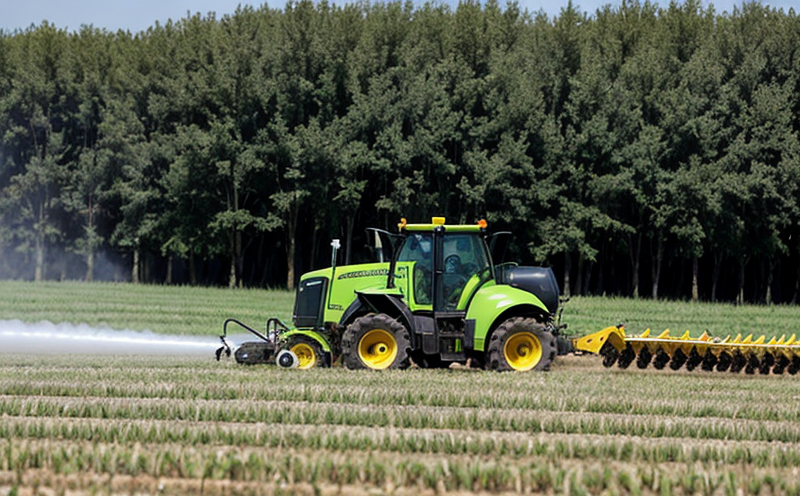Triadimefon Residue Testing in Crops
Triadimefon is a widely used fungicide that belongs to the imidazolinone group. It is primarily employed for the control of various fungal diseases on crops such as wheat, barley, and other cereals. However, like any pesticide, its use must be carefully regulated to ensure food safety and environmental protection. This service focuses specifically on the residue testing of triadimefon in crops, ensuring compliance with international standards and guidelines.
Residue testing plays a crucial role in agricultural quality management by identifying potential contamination levels that could affect crop safety and marketability. The process involves sampling crops at various stages of growth and processing them to extract any traces of the pesticide. Our laboratory adheres strictly to ISO 17025 standards, ensuring accurate and reliable results.
The testing procedure begins with a thorough sample preparation that includes drying, grinding, and sieving the crop material. A precise amount is then weighed out for analysis. Depending on the crop type, different extraction methods may be employed; these could range from simple solvent extraction to more complex techniques such as liquid-liquid partitioning or solid-phase microextraction (SPME). Once extracted, the residue is purified and concentrated before being analyzed using high-performance liquid chromatography (HPLC) coupled with mass spectrometry (MS).
The analytical method used for determining triadimefon residues is based on ISO 17025:2017. This international standard provides robust guidelines for laboratory testing, which are essential for producing accurate results. The method ensures that the detection limit for triadimefon in crops is below the maximum residue level (MRL) specified by regulatory bodies like the European Food Safety Authority (EFSA).
The primary objective of this service is to provide assurance to stakeholders involved in agricultural production and processing, including quality managers, compliance officers, R&D engineers, and procurement teams. By offering precise testing services, we help ensure that crops meet stringent food safety standards set by local authorities and international markets.
- Competitive Advantage: Ensuring adherence to global standards helps maintain market access for agricultural products worldwide.
- Regulatory Compliance: Meeting MRLs prevents legal issues and penalties associated with non-compliance.
- Precision: Our advanced analytical techniques guarantee high accuracy in detecting even minute amounts of triadimefon residues.
Industry Applications
The application of triadimefon residue testing extends beyond just crop safety; it also supports research and development efforts aimed at optimizing pesticide usage. Researchers can use the data obtained from these tests to study how different factors influence the persistence and distribution of triadimefon within plants.
Additionally, this service is beneficial for companies involved in seed treatment, where ensuring low levels of pesticides is critical for both plant health and human consumption safety. For procurement teams, knowing that suppliers adhere to strict residue limits fosters trust and reliability in sourcing materials from reputable sources.
In terms of practical applications, quality managers can use the results of these tests to make informed decisions regarding harvesting schedules or post-harvest handling practices. They can also utilize this information to develop improved storage methods that minimize degradation of triadimefon over time.
Why Choose This Test
Selecting our triadimefon residue testing service ensures you receive scientifically accurate and legally compliant results. Our commitment to precision is reflected in every aspect of the testing process, from sample preparation to final analysis.
One of the key reasons clients choose us is our adherence to ISO 17025:2017 standards. These stringent requirements ensure that all tests conducted are repeatable and reproducible, thus providing consistent results across multiple analyses. This consistency is vital for maintaining confidence in your data.
Moreover, by choosing this service, you gain access to state-of-the-art instrumentation and experienced personnel who understand the nuances of pesticide residue analysis. Our laboratory uses cutting-edge technology such as HPLC-MS/MS, which offers superior sensitivity and selectivity compared to older analytical methods like GC-MS.
The importance of selecting this test cannot be overstated, especially given the increasing scrutiny placed on food safety standards globally. In an era where consumers are more aware than ever about what goes into their food, having reliable evidence that your products meet or exceed regulations can significantly enhance consumer trust and brand reputation.





